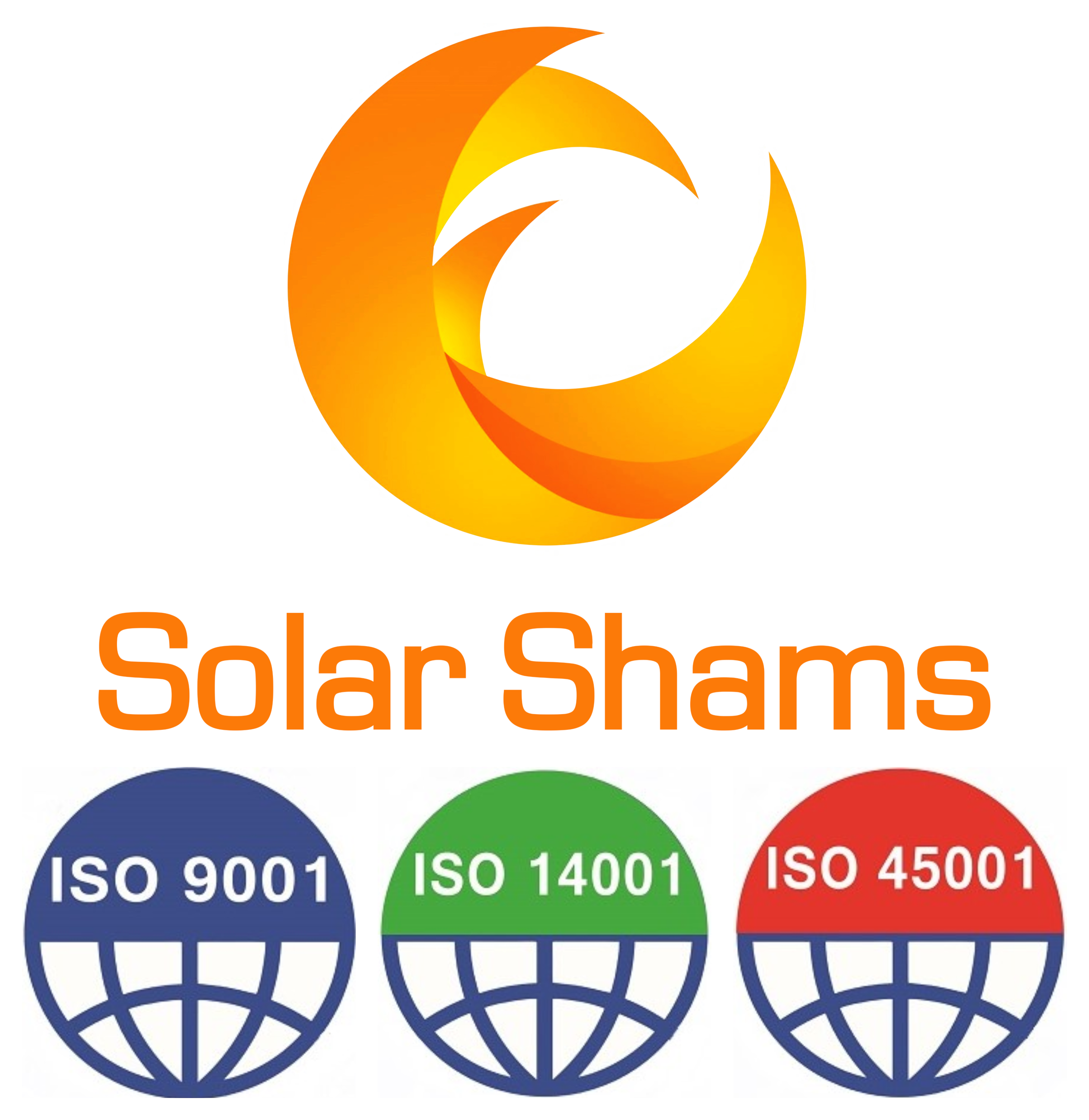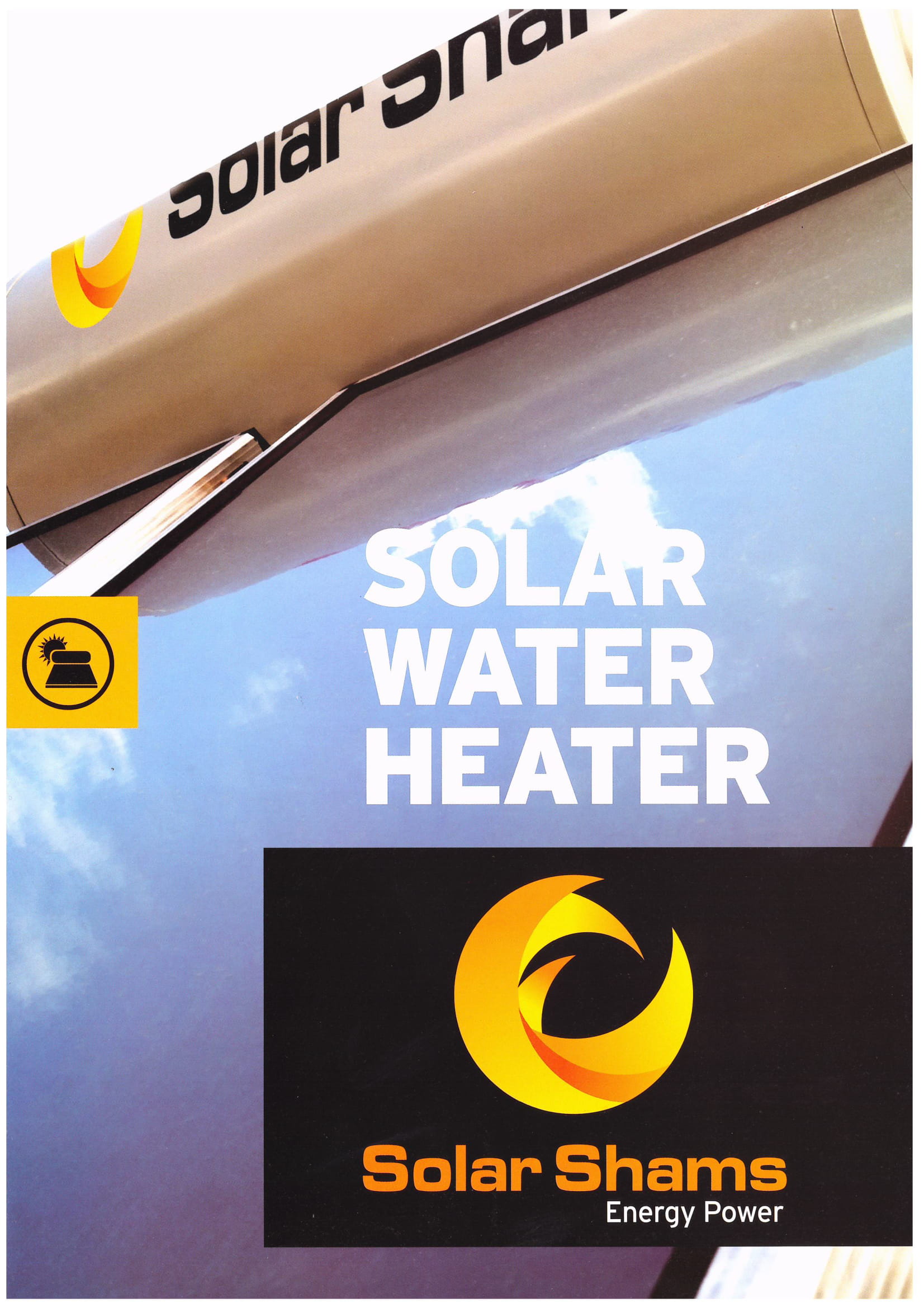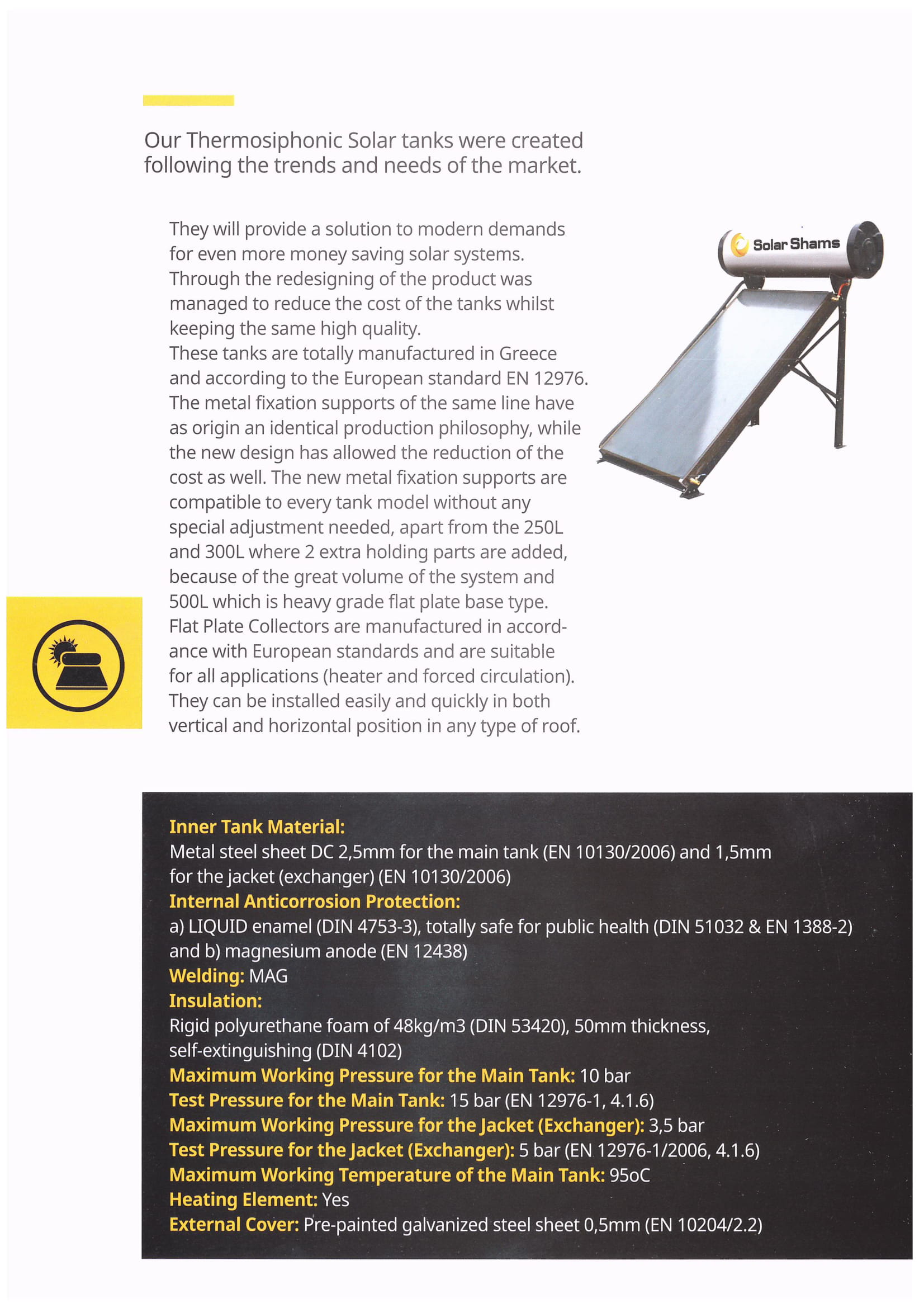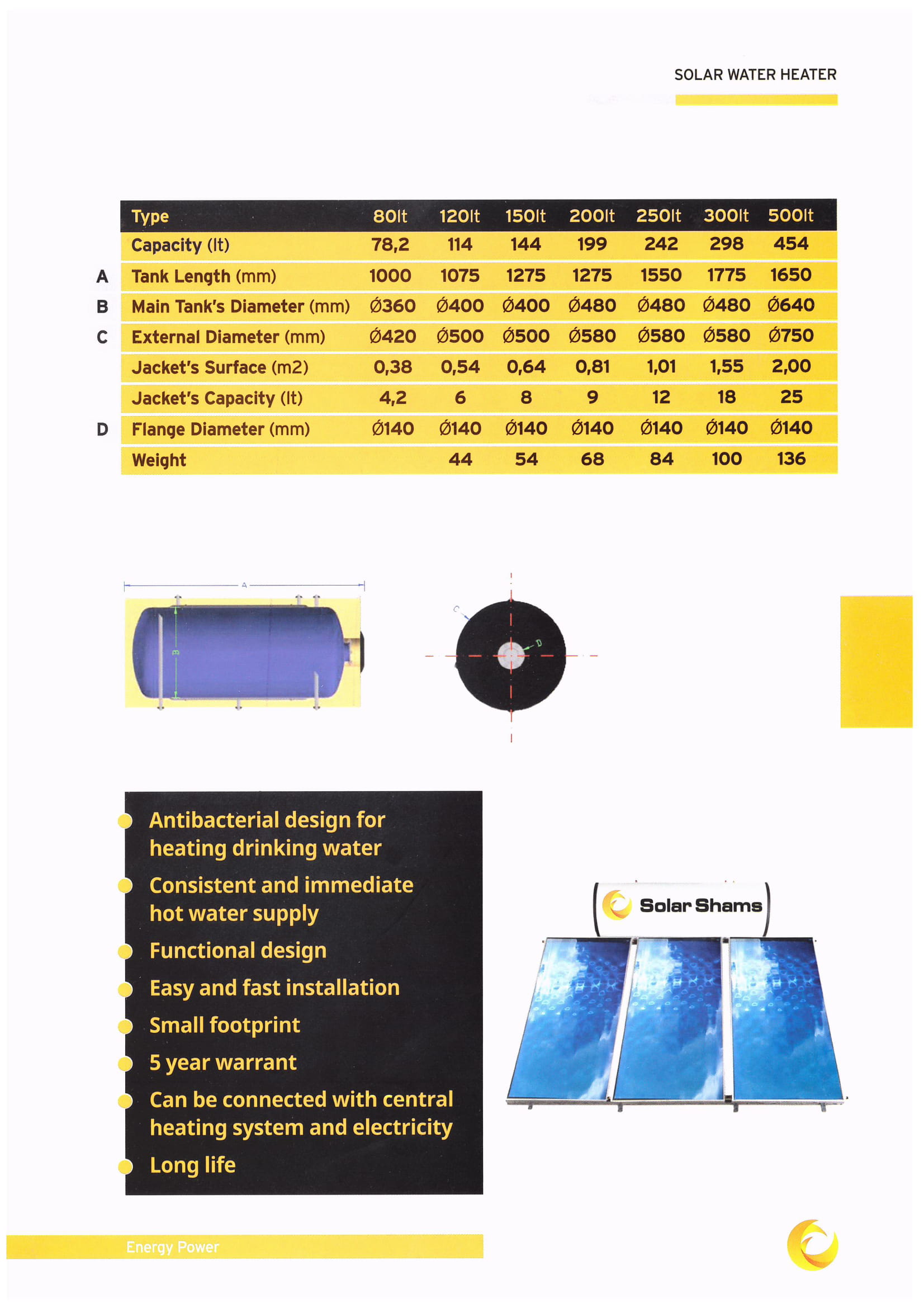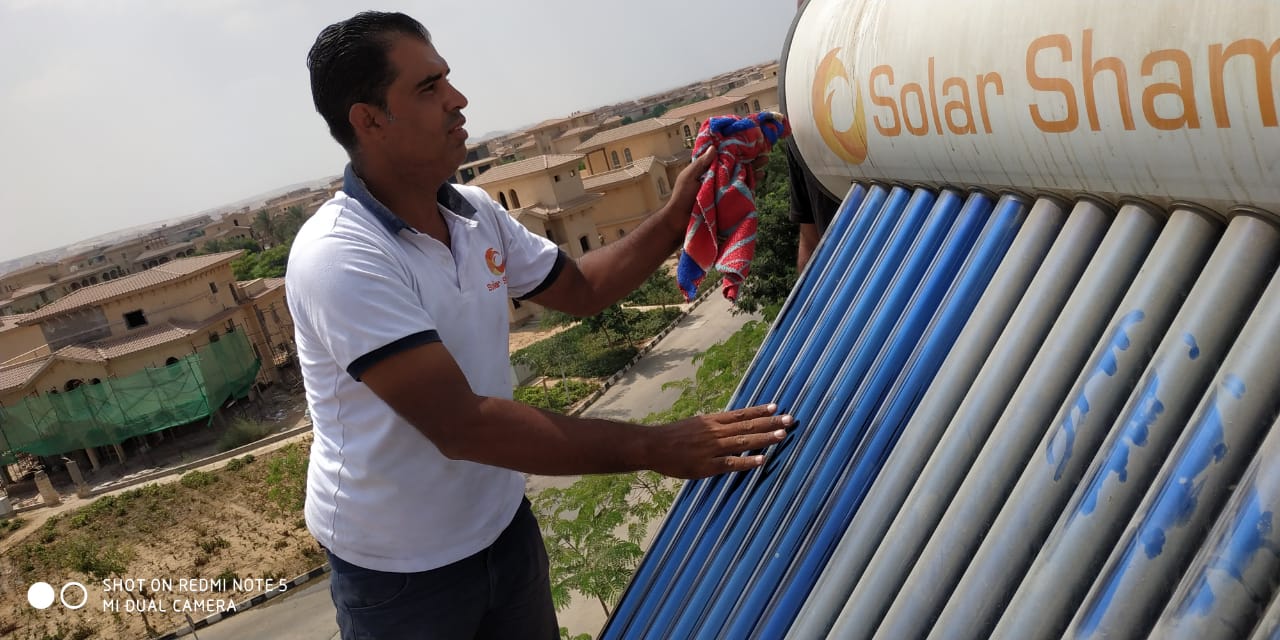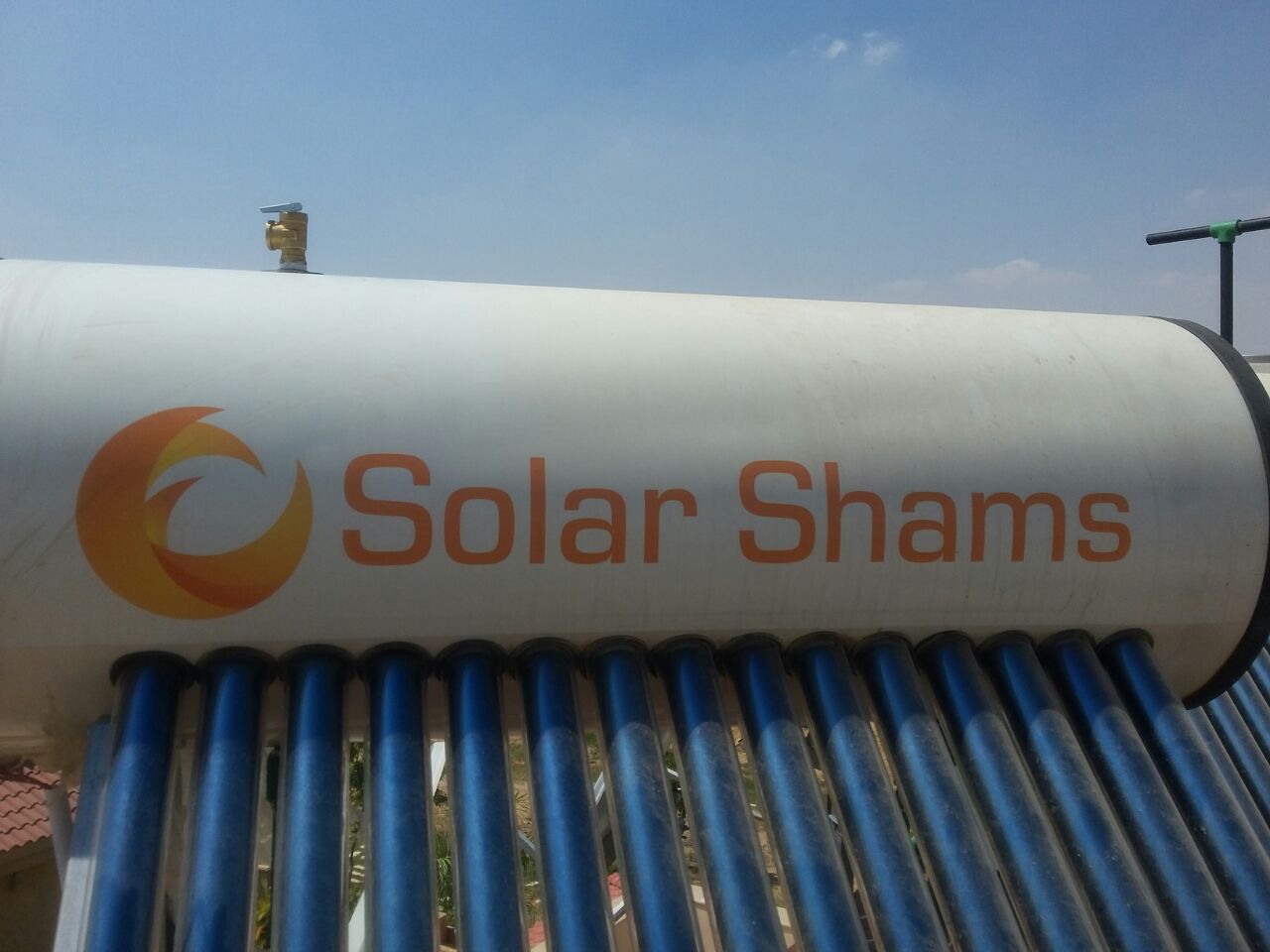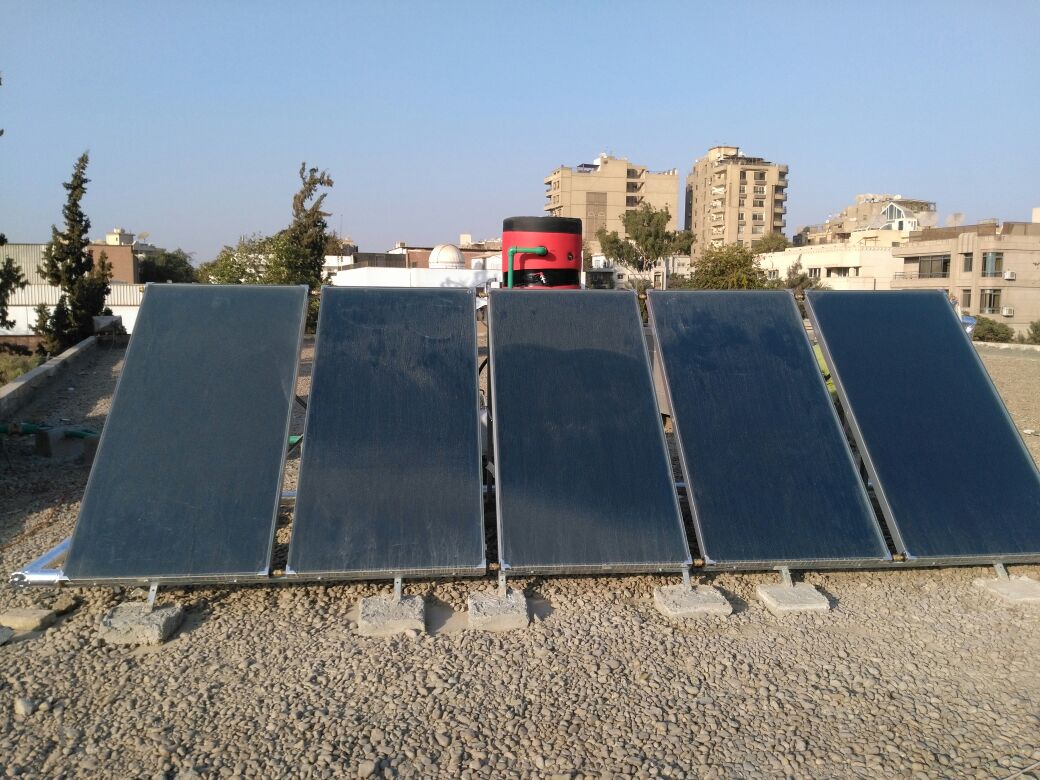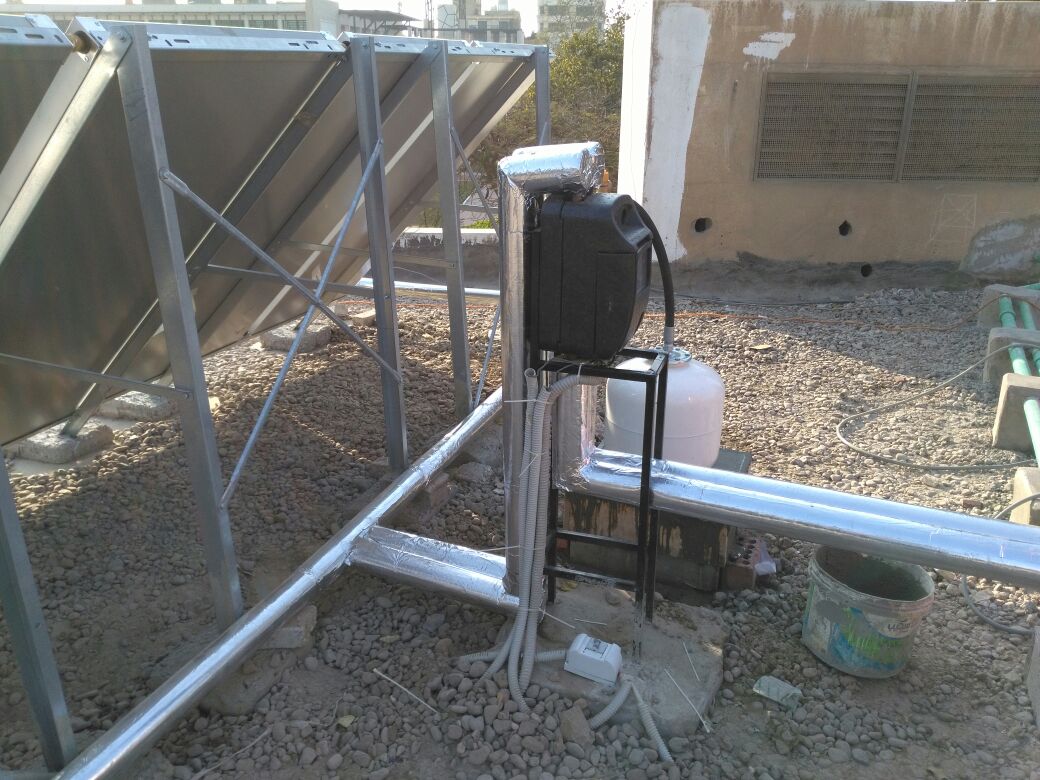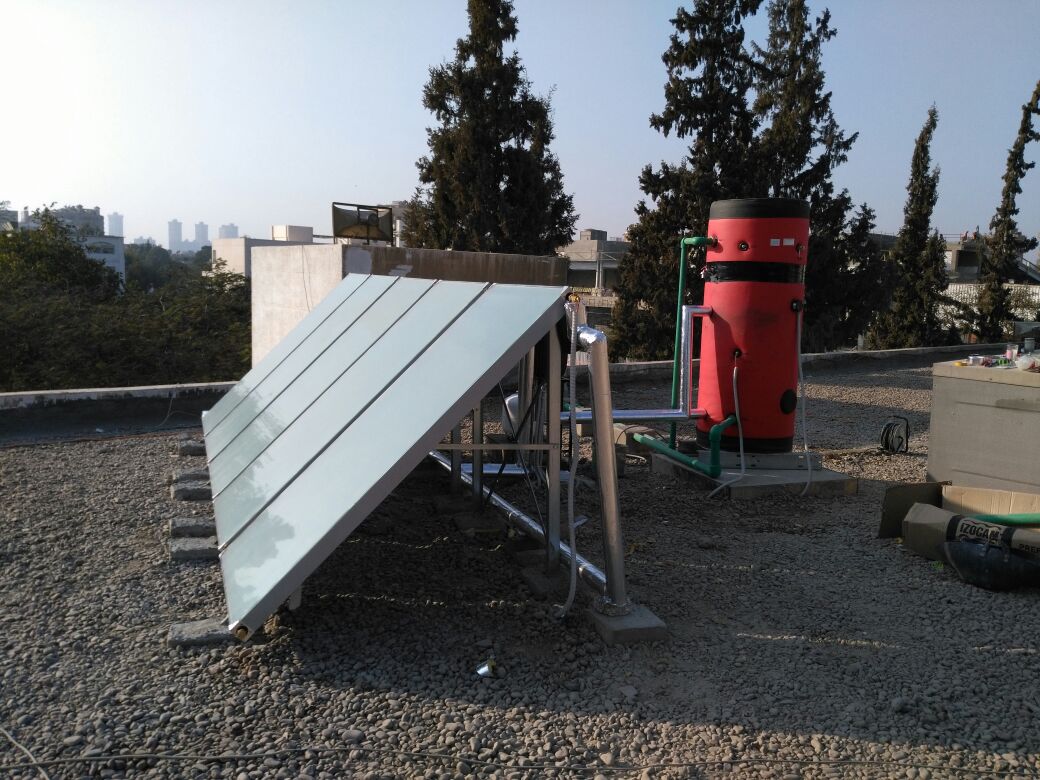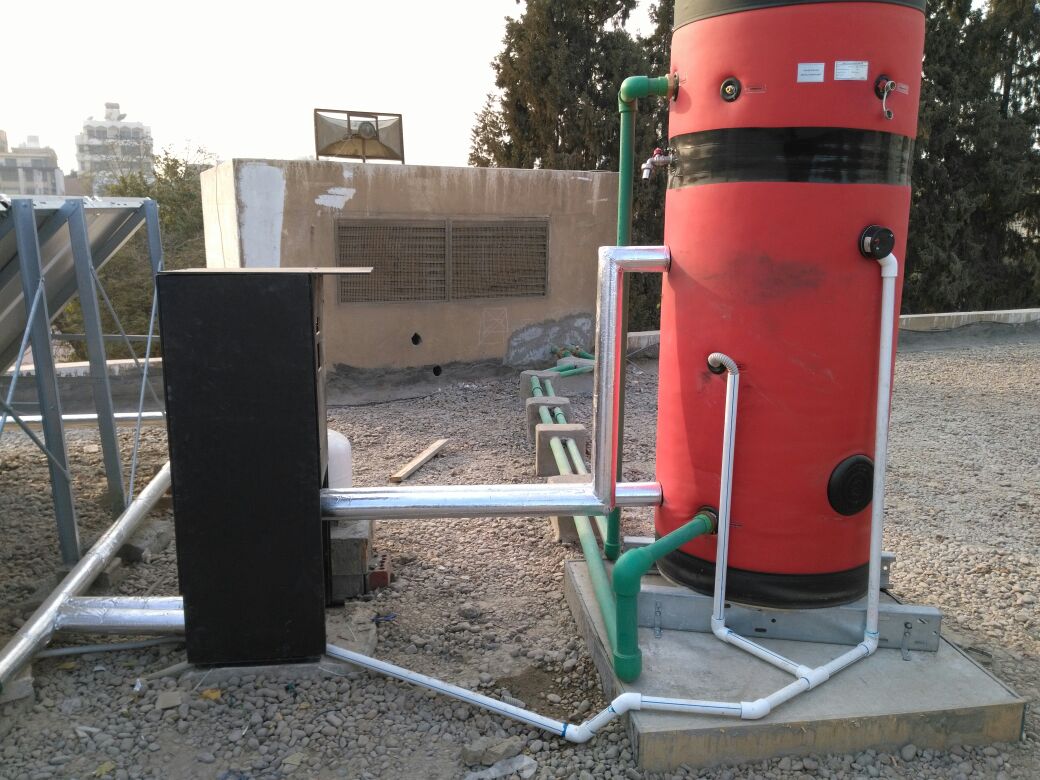- Home
- Technology Solutions
- Market Applications
- Services
- Engineering, Procurement & Contraction (EPC)
- Solar Projects Development (include feasibility studies)
- Construction & Projects Management
- Independent Power Production (IPP) (include investment)
- Investment & Financing
- Operation & Maintenance (O&M)
- Measurement
- Industrial Roof
- Independent Power Production (IPP) (include investment)
- Projects
- About Us
- News
- Celebration of the national day of Switzerland
- Interview on Al-Hadath Satellite Channel
- Reward from Emisal
- Schlumberger 0.5 MWp Car Shade Testing & Commissioning
- Sky News Report
- Swiss Ambassador's Residence Website
- Hadith Al Saa’a: the crisis of investment in renewable energy between investors and the government
- Installation at Kandil Steel Kama II
- Solar Expo & Forum Exhibition
- The Solar Show MENA 2020
- Careers
- Contact Us
Solar Water Heating
Solar water heating (SWH) is the conversion of sunlight into heat for water heating using a solar thermal collector. A variety of configurations are available at varying cost to provide solutions in different climates and latitudes. SWHs are widely used for residential and some industrial applications.
A sun-facing collector heats a working fluid that passes into a storage system for later use. SWH are active (pumped) and passive (convection-driven). They use water only, or both water and a working fluid. They are heated directly or via light-concentrating mirrors. They operate independently or as hybrids with electric or gas heaters. In large-scale installations, mirrors may concentrate sunlight into a smaller collector.
The global solar thermal market is dominated by China, Europe, Japan and India.
Records of solar collectors in the U.S. date to before 1900, involving a black-painted tank mounted on a roof. In 1896 Clarence Kemp of Baltimore enclosed a tank in a wooden box, thus creating the first 'batch water heater' as they are known today. Frank Shuman built the world’s first solar thermal power station in Maadi, Egypt, using parabolic troughs to power a 60-70 horsepower engine that pumped 6,000 gallons of water per minute from the Nile River to adjacent cotton fields.
Flat-plate collectors for solar water heating were used in Florida and Southern California in the 1920s. Interest grew in North America after 1960, but especially after the 1973 oil crisis.
Solar power is in use in Australia, Canada, China, Germany, India, Israel, Japan, Portugal, Romania, Spain, the United Kingdom and the United States.

